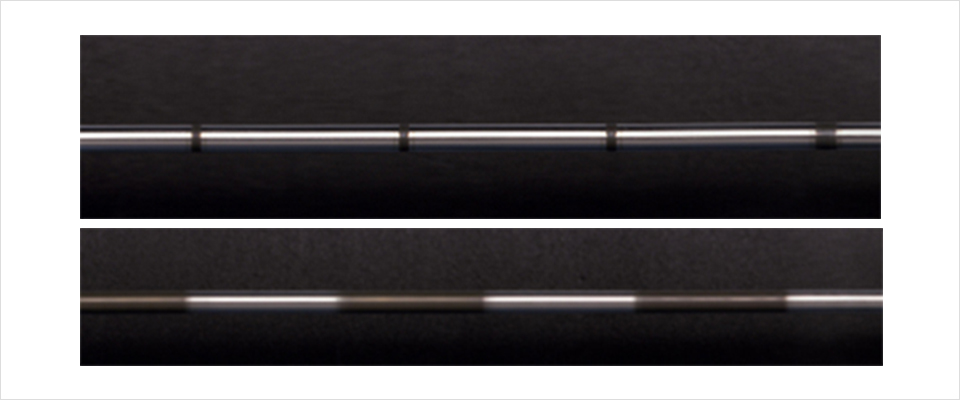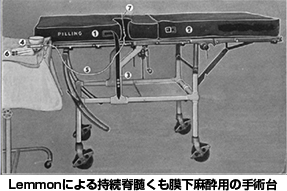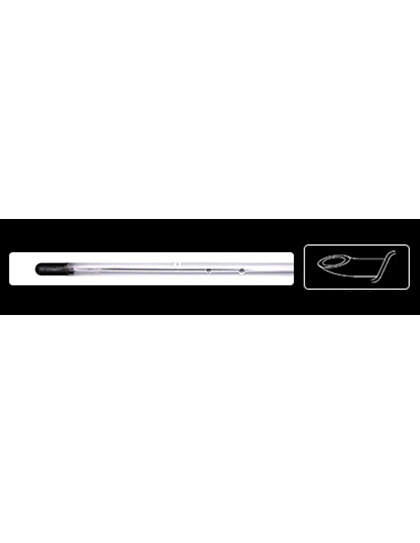Disposable Epidural Anesthesia Minitray
*Standard size : 80mm・90mm
- 17G
- 18G
Entry Model for Epidural Anesthesia Operation
Devices required for pain management during and after operation are assembled in a compact kit. Combination of flexible easy-to-handle catheter and epidural needle easy operation of epidural anesthesia at reasonable cost.
| Product Name | Disposable Epidural Anesthesia Minitray |
|---|---|
| Needle point Type | Epidural Anesthesia Needle (with Plastic Stylet) Huber Point, Belt Type Graduation and Wing |
| Package & delivery unit | Individually packed and 10 pcs/box |
| Product Trade Name | UNIVER DISPOSABLE EPIDURAL ANESTHESIA MINITARY |
| Other | E.O.G. sterilized(shelf life 5years) |
| G: Gauge / Color Code |
Length (Needle) |
Graduation (20Gx1000mm) |
L.O.R. Syringe | Other | REF(Code No.) |
|---|---|---|---|---|---|
| 17G | 90mm | Closed-Tip with 3 lateral eyes | 10mL |
*Catheter Connector
*Epidural Filter *Catheter Guide |
5410061 |
| 18G | 5430061 |
特徴

Huber Point
Bevel of outer cannula and inner stylet are ground at ideal angle to provide appropriate resistance at insertion and yet less invasiveness. Heel part of the bevel is specially treated to enable smooth insertion of, and prevent damage to the catheter.
Depth Marking
Puncturing depth is visually recognizable by depth marking worked over the pipe surface.


Anti-coring process at bevel-heel
Heel part of the bevel is specially treated to enable smooth insertion of, and prevent damage to the catheter.


Catheter
Prevent obturation
Spring coil is embedded at the end tip to enhance the strength, which helps to prevent obturation of catheter caused by tight screwing of connector for long period.
Easy detection
Radiopaque agent is linearly embedded for easy detection of catheter piece left, in case of breakage inside body.

Catheter Connector
Ergonomically and smoothly designed connector enables easy detatch of catheter in spite of strong holding provided by screwing mechanism. Our unique technology delivered the firm holding of catheter, yet without obturation (patent issued).

L.O.R Syringe
Originally designed gasket enabled glass-like low resistance in sliding of plunger, in spite of plastic material.
Performance comparison with the former Unisis kit and competitors products
| Company A | Company B | Unisis New Catheter Kit |
Unisis Former Catheter Kit |
||
|---|---|---|---|---|---|
| Catheter | Material | Polyamide | Polyethylene | Polyurethane | Polyurethane |
| Reinforcement | n /a | n /a | Embedded at the end tip (selected model) | Embedded at the end tip (selected model) | |
| Connector | Material | ABS | PC | PP | ABS |
| Structure | Hinge Type | Screw Type | Screw Type | Screw Type | |
| Feature | Lock catheter by one snap | - | Anti catheter drop-off structure, Anti discoupling structure | - | |
| Catheter Visibility | Excellent (with Indicator) |
Good | Excellent (with View port) |
Good | |
| Flow rate (straight) (Pressure : 1,000mmH2O) (flow rate depends on OD/ID) |
Approx.0.5ml/min | Approx.0.3ml/min | Approx.0.8ml/min | Approx.1.3ml/min | |
| Kink tolerance(*1) | Good | Good | Excellent Highly tolerant |
Excellent Highly tolerant |
|
| Flow rate under severity condition(*2) | Good (Half of the straight condition) |
Excellent (Equivalent as straight condition) |
Excellent (Equivalent as straight condition) |
Good (Half of the straight condition) |
|
| Insertability to epidural needle(*3) | Good | Good | Excellent (lesser resistance) |
Good | |
| Tensile strength (*4) | Connection between catheter and connector | Excellent (Stable at load twice the standard) |
Good (Satisfies standard) |
Excellent (Stable at load twice the standard) |
Excellent (Stable at load twice the standard) |
| Catheter side hole | Excellent (No breakage at load twice the standard) |
Good (Satisfies standard) |
Excellent (No breakage at load twice the standard) |
Excellent (No breakage at load twice the standard) |
|
*1 Kink tolerance evaluation
Apply compressive load to catheter inflected in a horseshoe shape. Monitor occurrence of kink (a point where resistance falls).

*2 Flow rate under severity condition
Flow rate under severity condition.
Pressure : 1,000mmH2O

*3 Catheter insertion smoothness into epidural needle
Max resistance force is measured when the catheter passes through the curved point of the epidural needle.
Speed : 200mm/min

*4 Breakage strength
Based on JIS T 3258

How the Epidural Anesthesia is preferred
Epidural Anesthesia is a type of regional anesthesia, which has been widely recognized in Japan since its adaptation at surgical operation for Showa Emperor in 1987. In this case it is also known that Continuous Epidural Anesthesia with indwelling catheter was used and had positive outcomes, for desensitization and protection against pulmonic complication.
Epidural Anesthesia procedure , in comparison to Spinal Anesthesia, has an advantage of safe and easy control of pain after surgery, by continuous administration of agent through indwelling catheter.
Site of application
Widely applicable from thoracic region to sacrum and commonly used in general abdominal surgery, such as gynecological, urological, perineal, upper limb, cervical and thyroid gland.
Effectively used for desensitization of thoracic and upper abdominal region, in parallel use with Spinal Anesthesia. Also effective in lowering the risk of surgery by redusing amount of Spinal Anesthesic Agent, for example in case of operation of aged patient with hypohepatia.
Other than surgery, this procedure is also used in several fields such as painless labor, cingulum, and relief of cancerous pain.

Origin of Epidural Anesthesia
In 1901, Dr. Jean E. Sicard has approached the first trial of sacral (Epidural) Anesthesia, aiming to ease sciatica of a patient.
Dr. Achille M. Dogliotti reported his research on procedure to inject regional anesthesic agent into epidural space. This procedure was widely introduced to Europe and South America.
Dr. William Lemmon attempted continuous Spinal Anesthesia, using 17gauge flexible silver needle through a hole placed in the middle of surgical table.
In 1944, Dr. Tuohy had improved the problem of this method (fixation of needle) by indwelling ureteral catheter into subarachnoid cavity through 15gauge Huber point spinal needle, and implemented Continuous Spinal Anesthesia.
Later, this method had become the origin of Epidural Anesthesia.

* Please inquire at us for sizes out of the above table.
Back to products lineup page









